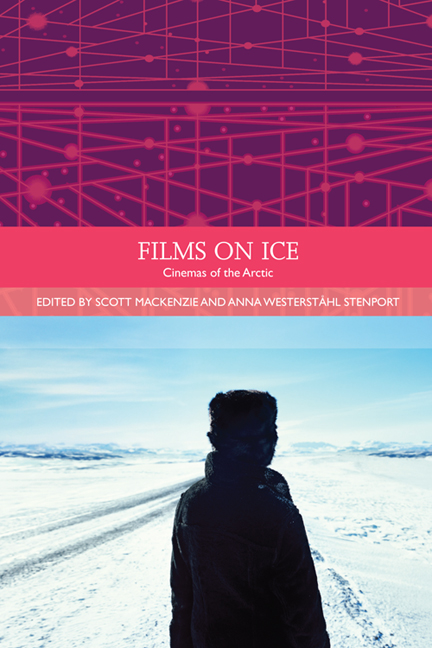Book contents
PART III - ETHNOGRAPHY AND THE DOCUMENTARY DILEMMA
Published online by Cambridge University Press: 05 September 2016
Summary
For some, the cinema offers a historical and ethnographic document that acts as a means for the preservation of culture. For others, documentary and ethnographic strategies add verisimilitude to melodramatic narratives of other cultures. Another approach to ethnography uses the cinema to capture a past already gone, for the preservation of this way of life for outsiders. In other renditions, documentary cinema is understood to mobilise a ‘travelling gaze’ that purports to be detached and observational, while ethnographic filmmaking has always been considered in tension with that of the conundrum of a visual anthropologist, namely of being both participant and observer. In the history of Arctic cinemas, ethnographic and documentary films from the 1920s and 1930s have had a privileged status, which this section of Films on Ice uncovers. Indeed, the claims to realism that so often dominate documentary cinema have not been the only mode of production. Anti-realist forms derived from Soviet montage, for example, have also been central for Arctic representation from the 1920s and continue to influence contemporary experimental and hybrid documentaries. The same can be said of the use of self-reflexive or metacinematic techniques in documentary and ethnographic filmmaking, which foreground the status of the image as a construction. In ‘The Creative Treatment of Alterity: Nanook as the North’, Scott MacKenzie examines the many reiterations of Flaherty's influential film to show how it has been recast in documentary films, feature-length fictional accounts, indigenous media, IMAX and experimental cinema, delineating its continual and conflicted role in the popular imagination. Ebbe Volquardsen examines one of Denmark's best-known ethnographic feature films, contemporaneous with Flaherty's, to highlight the contested geopolitical status of Greenland in the early 1930s. His chapter ‘From Objects to Actors: Knud Rasmussen's Ethnographic Feature Film The Wedding of Palo’ foregrounds both the venerable status of Knud Rasmussen as an explorer and ethnographer in Danish history and how the film continues to be both cherished and mocked as a thwarted historical document for the Greenlandic population. In ‘Arctic Travelogues: Conquering the Soviet North’, Oksana Sarkisova examines how the depiction of indigenous peoples in the Soviet Arctic changed in accordance with the ideological narrative of a communist state in the 1920s and the 1930s.
- Type
- Chapter
- Information
- Films on IceCinemas of the Arctic, pp. 197 - 200Publisher: Edinburgh University PressPrint publication year: 2014



